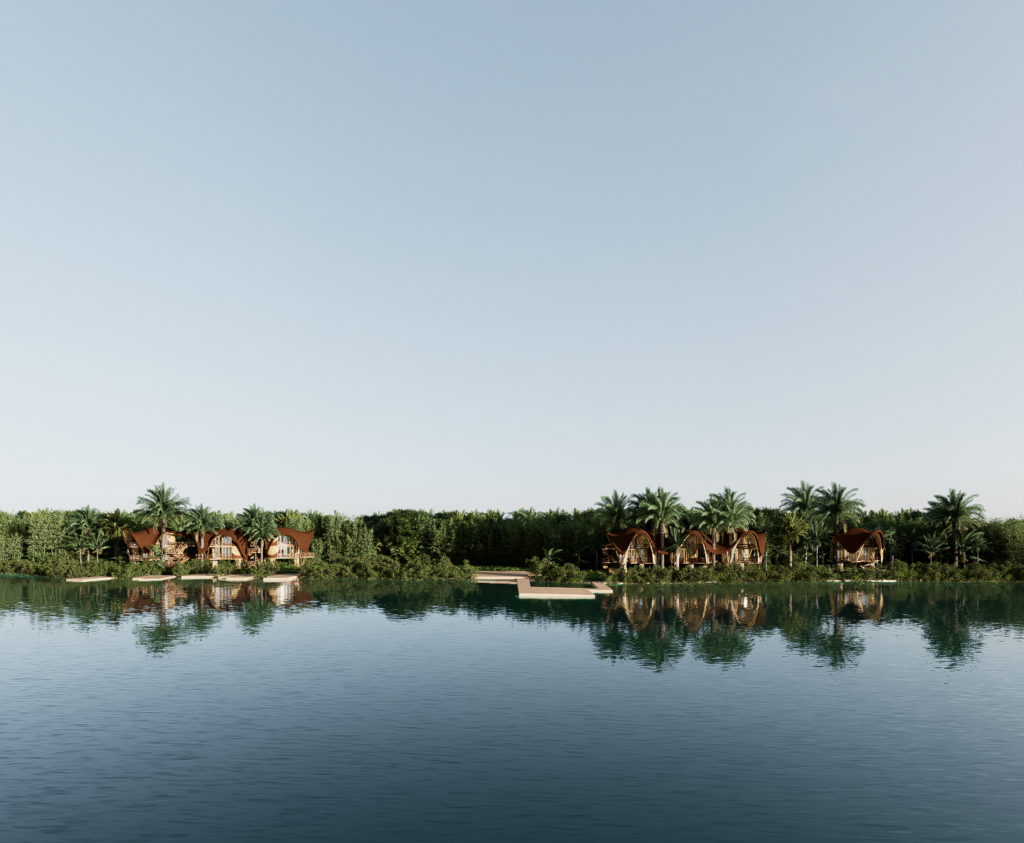
computational design and ecological materials
cellular cabins
type: architecture
role: architectural designer
collaboration: Jaime Pena Studio
location: Bacalar, Mexico
year: 2023
The cellular cabins project is a collection of 70 sqm eco-friendly huts designed for a holistic centre in Bacalar, Mexico. The huts use natural materials such as bamboo, wood, and earth. Developed under the coordination of Jaime Peña, my role involved conceptualizing two distinct hut typologies and producing technical drawings.
The concept subtly draws from the life cycle, reflecting the cellular division process. The layout of the huts mirrors this idea, with two types of structures representing different stages of growth. One hut typology embodies the division into two cells, while the other represents the division into four, trying to attend to the client’s vision of connecting to nature’s regenerative forces.
The roof design was shaped through the deformation of domes to achieve a fluid and organic form that embraces the cluster of huts. This design was refined in an iterative loop between Rhino and Grasshopper. Initially modelled in Rhino using SubD tools, the roof was then transformed into a mesh in Grasshopper, discretized into lines and points, and optimized through relaxation in Kangaroo.
conceptual design
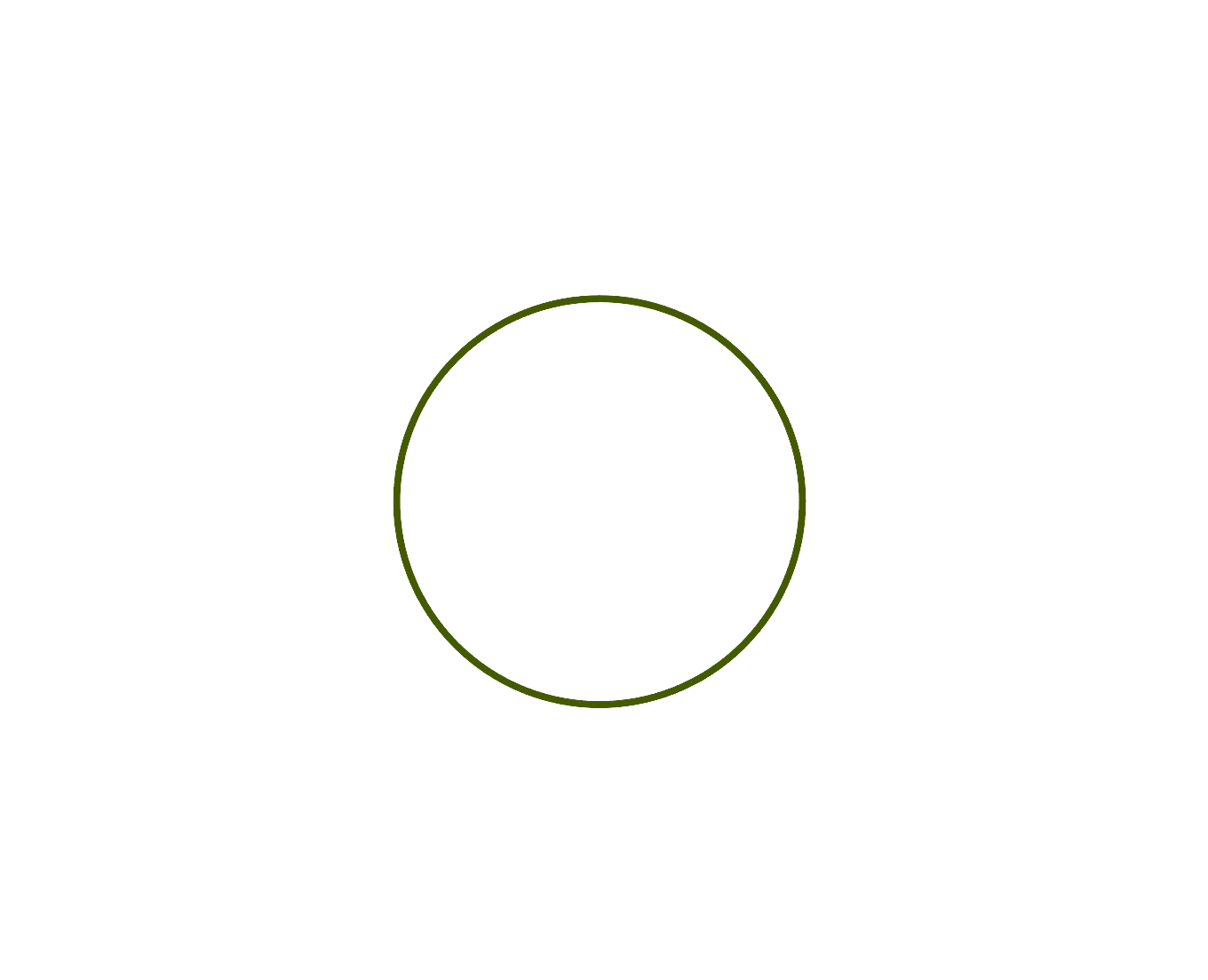

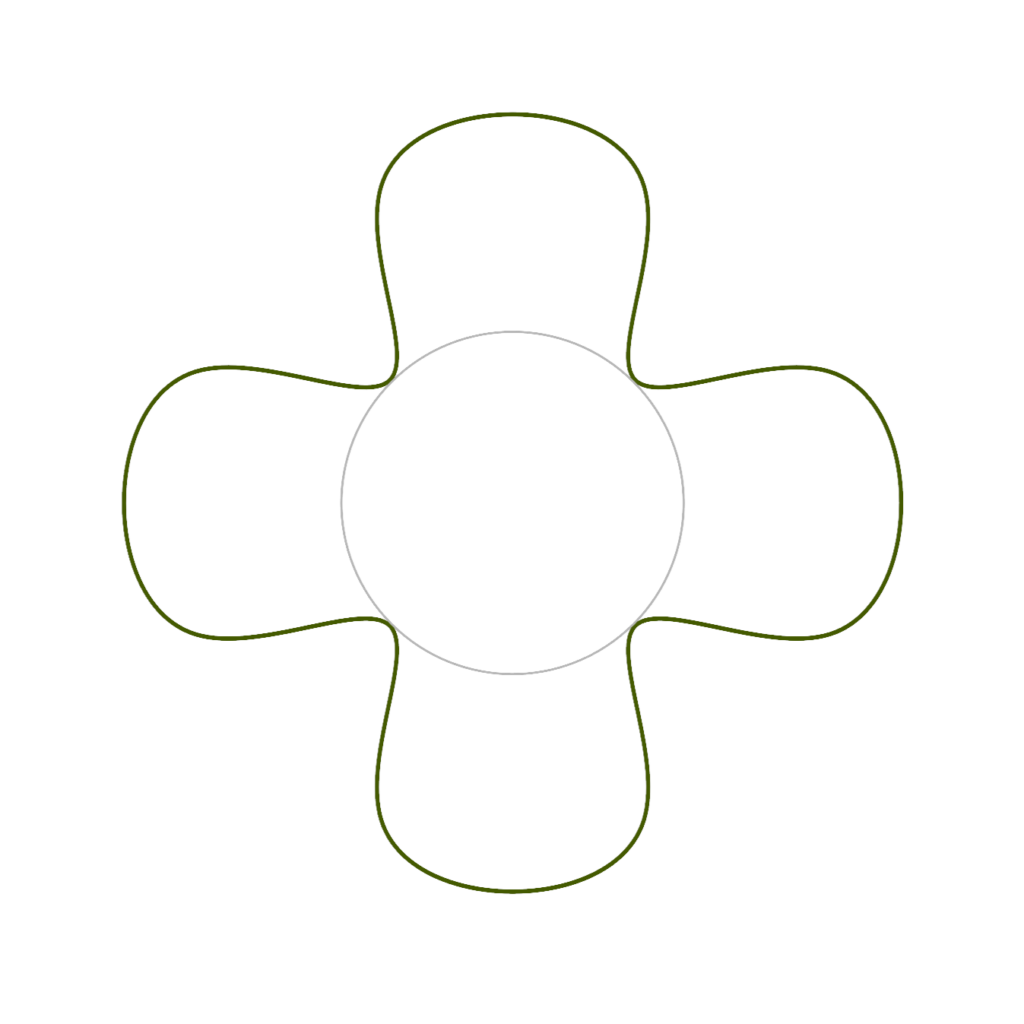
design process

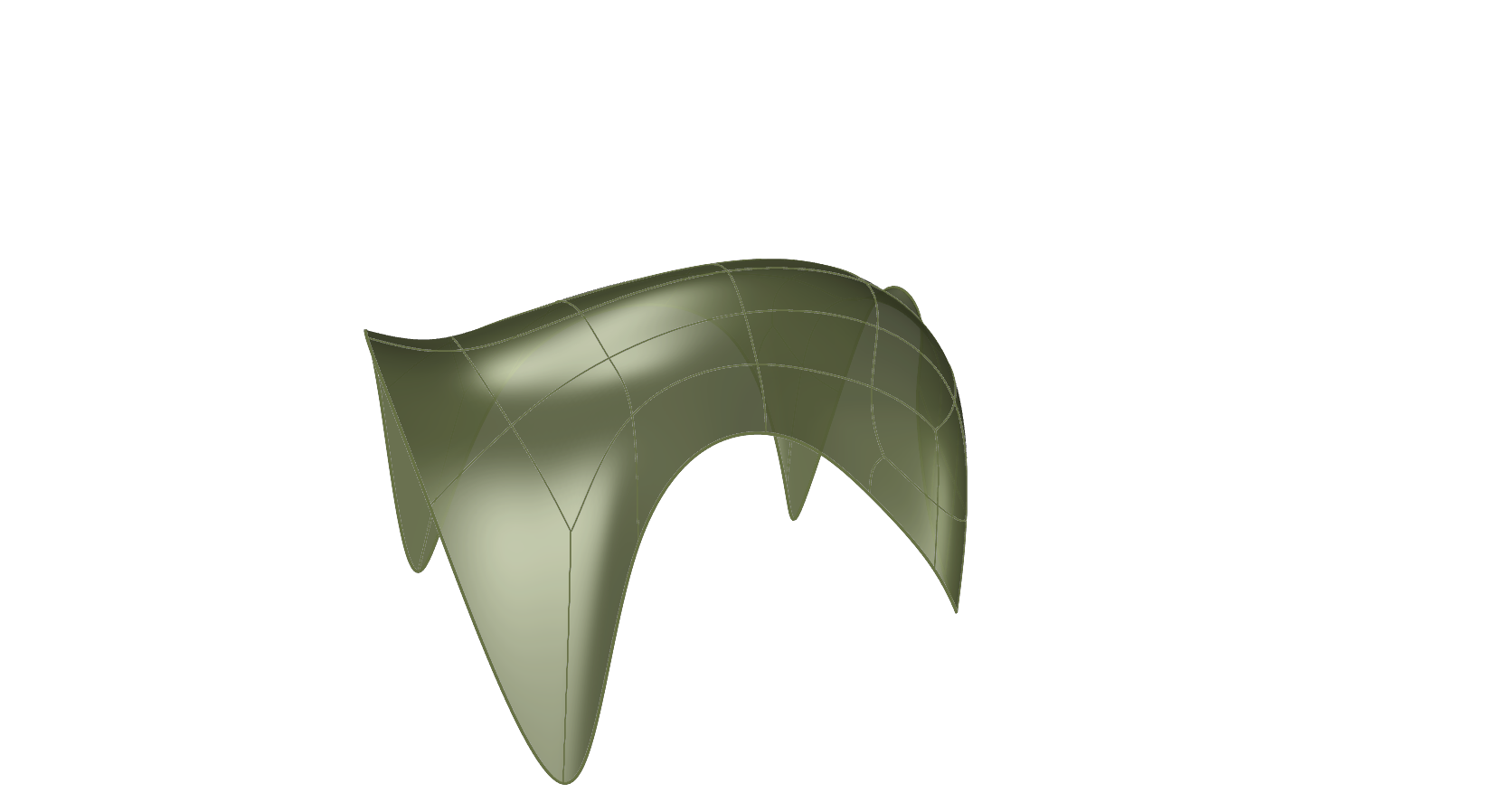

typology A – two cells
design process
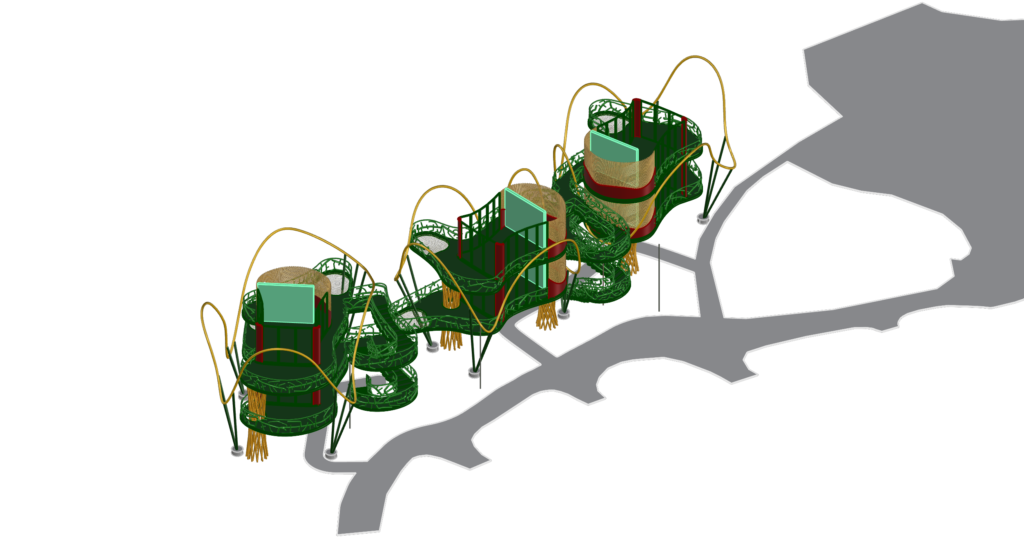
Green: wood
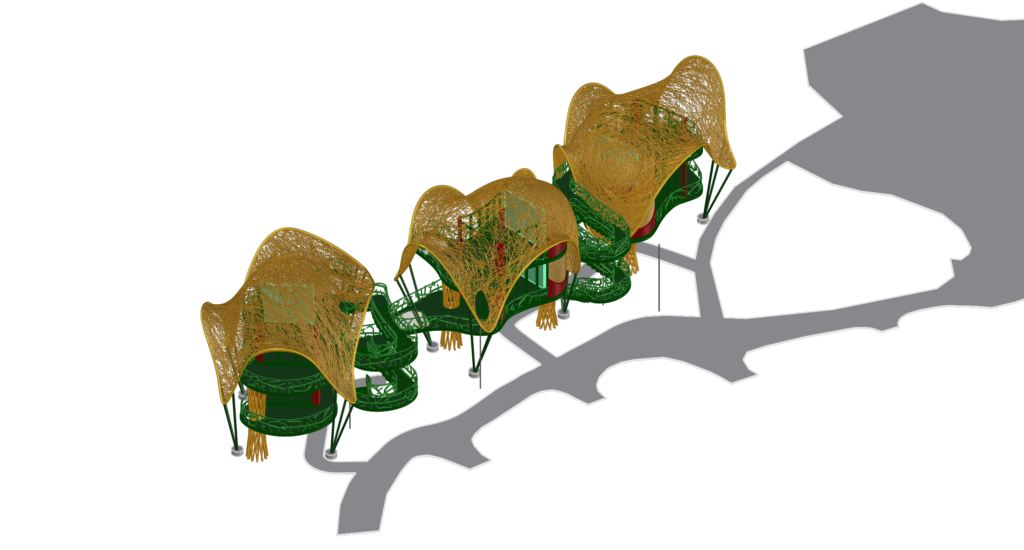
Yellow: bamboo

Brown: earth

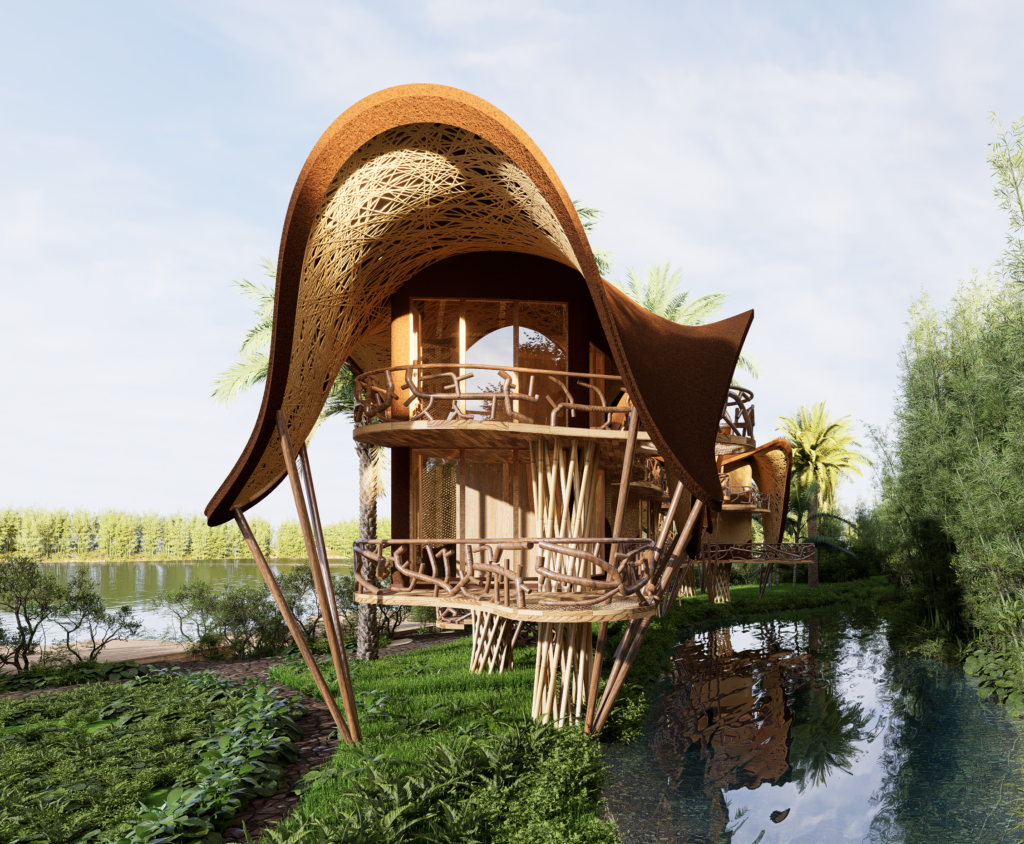

technical schematics
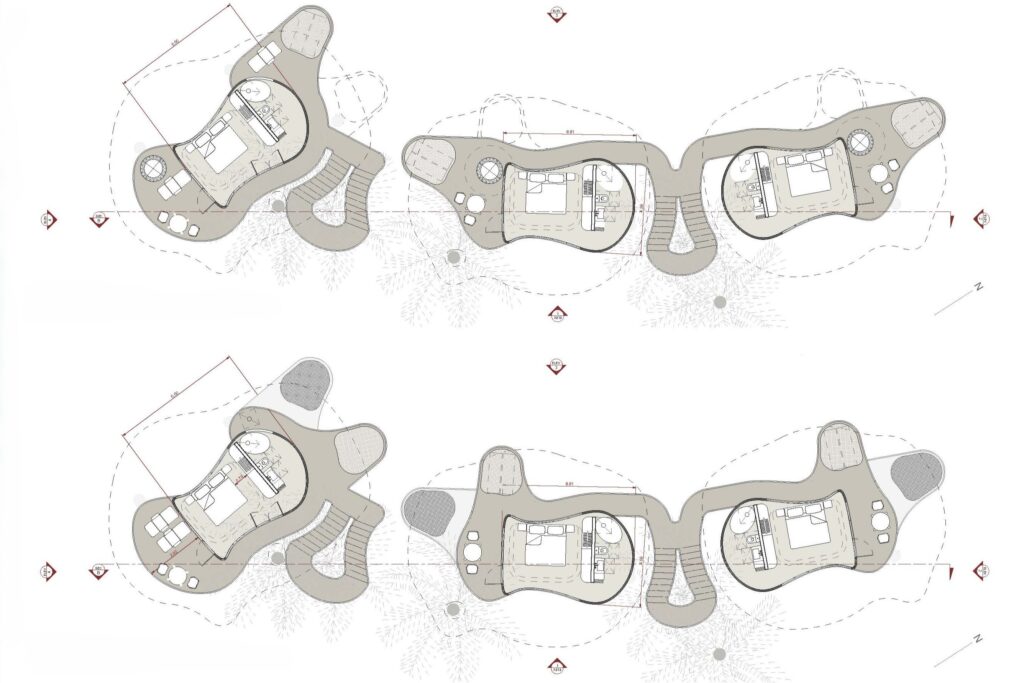
Second floor (area: 40sqm)
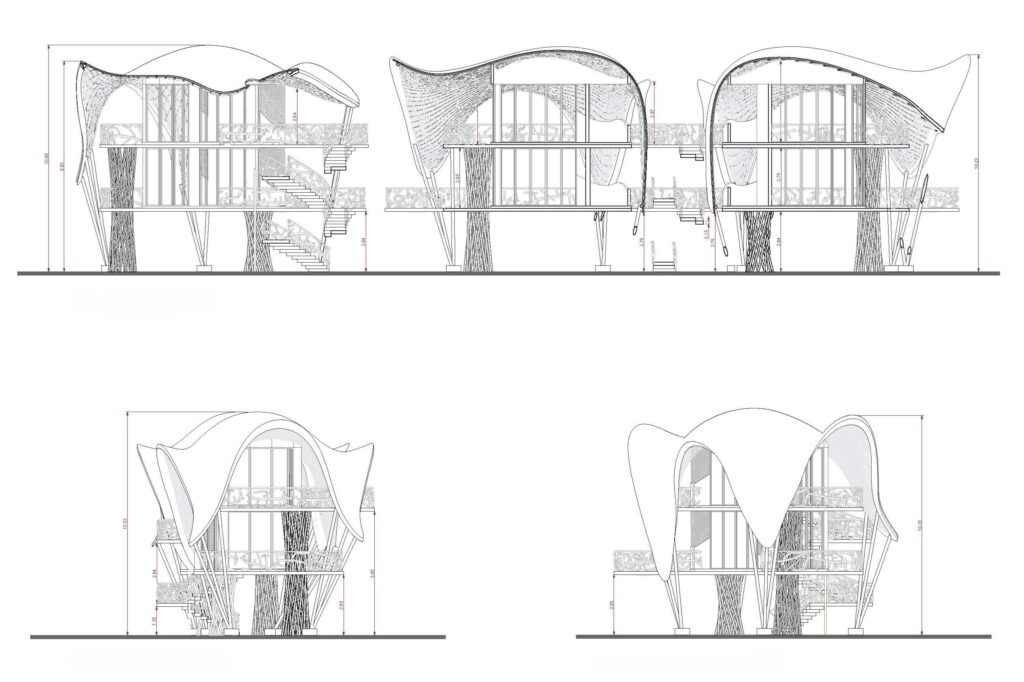
Elevations 2 and 4
typology B – four cells
design process

Green: wood
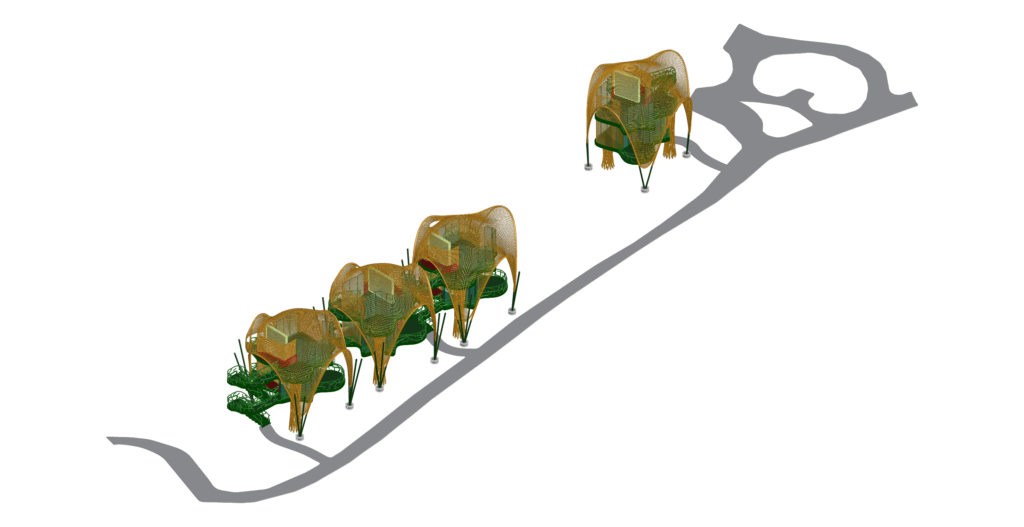
Yellow: bamboo
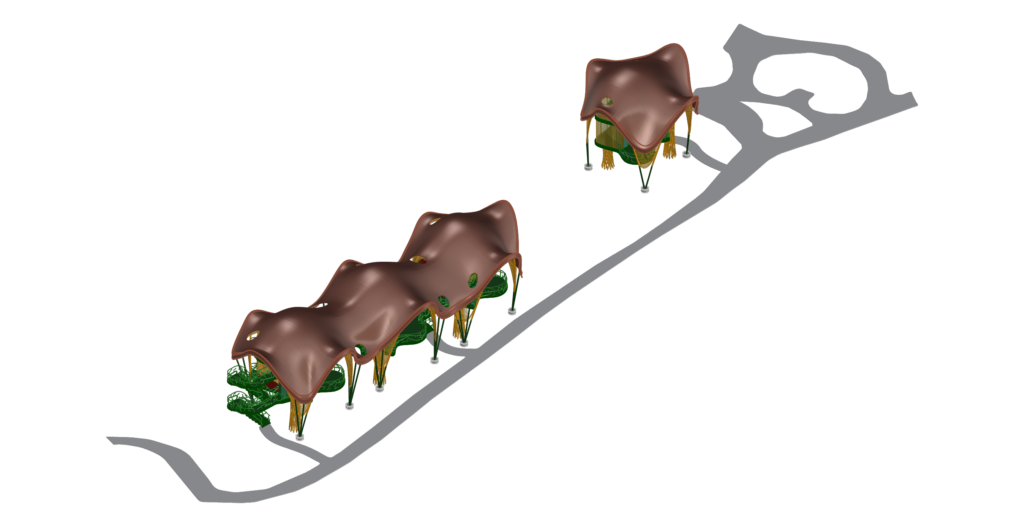
Brown: earth



technical schematics

Second floor (area: 33sqm)
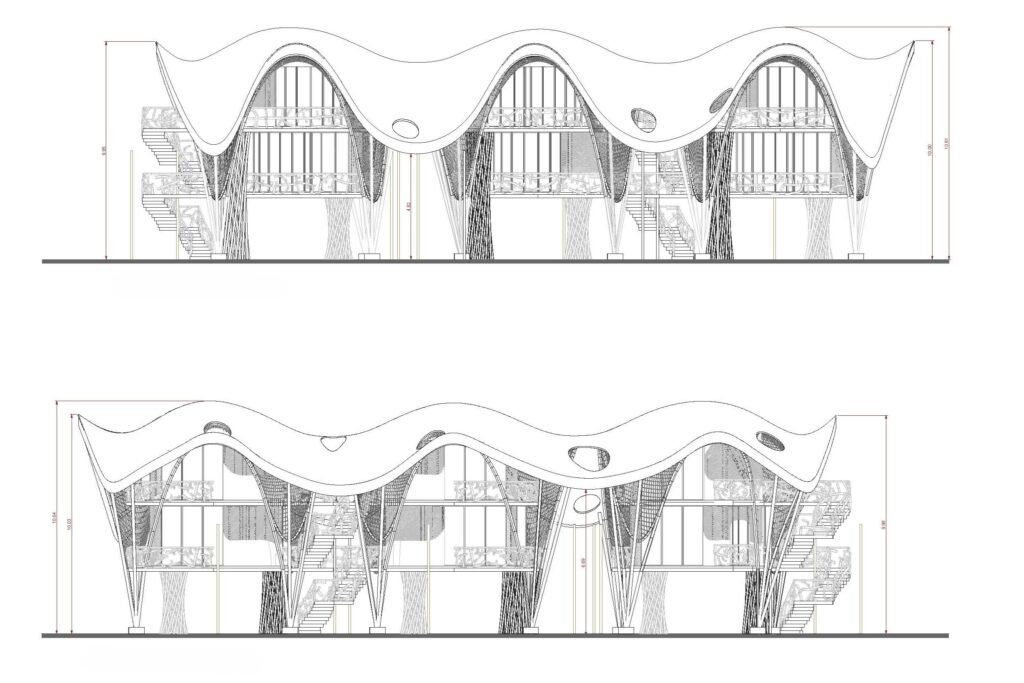
Elevation 3
both typologies
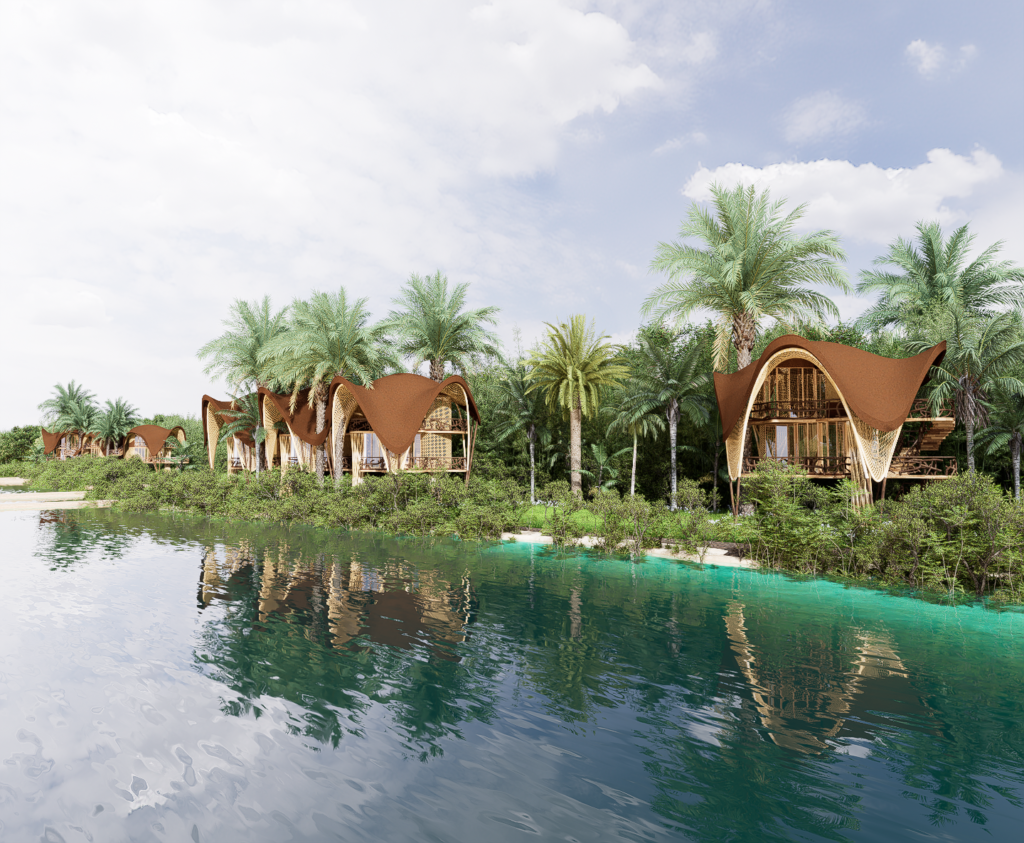
team
Creative Director: Jaime Pena.
Lead Architect: Camila Calegari Marques.
Parametric Modelling and Render: Camila Calegari Marques.